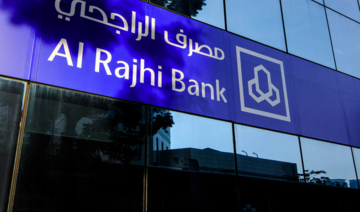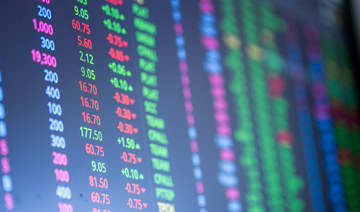WASHINGTON: The Federal Reserve took emergency action Sunday and slashed its benchmark interest rate by a full percentage point to nearly zero and announced it would purchase more Treasury securities to encourage lending to try to offset the impact of the coronavirus outbreak. The central bank said the effects of the outbreak will weigh on economic activity in the near term and pose risks to the economic outlook. The central bank said it will keep rates at nearly zero until it feels confident the economy has weathered recent events.
The Fed also said it will purchase $500 billion of Treasury securities and $200 billion of mortgage-backed securities to smooth over market disruptions that have made it hard for banks and large investors to sell Treasuries.
The disruptions bumped up the yield on the 10-year Treasury last week, an unusual move that threatens to push borrowing costs for mortgages and credit cards higher. The Fed also said it has dropped its requirements that banks hold cash reserves in another move to encourage lending.
The Fed also announced that it has cut interest rates on dollar loans in a joint action that it has taken with five central banks overseas. That is intended to ensure that foreign banks continue to have access to dollars that they lend to overseas companies.
All told, the Fed’s actions amount to a recognition that the US economy faces its most perilous juncture since the recession ended more than a decade ago.
By aggressively slashing its benchmark short-term rate to near zero and pumping hundreds of billions of dollars into the financial system, the Fed’s moves Sunday recalled the emergency action it took at the height of the financial crisis. Starting in 2008, the Fed cut its key rate to near zero and kept it there for seven years. The central bank has now returned that rate — which influences many consumer and business loans — to its record-low level.
Still, with the virus’ spread causing a broad shutdown of economic activity in the United States, the Fed faces a daunting task. Its tools — intended to ease borrowing rates, facilitate lending and boost confidence — aren’t ideally suited to offset a fear-driven halt in spending and traveling.
“We have to hope that the Fed getting out in front of events, not to mention other central banks, pushes the economy in the right direction,’’ said Adam Posen, president of the Peterson Institute for International Economics. “The heavy lifting for stimulus and for preventing lasting economic damage has to be done on the fiscal side. That’s nature of this shock.’’
“It confirms that the Fed sees the economy going down ... very sharply’’ toward recession, Posen said.
Posen advocates fiscal steps such as providing sick leave and pay for quarantined workers and rolling over bank loans to small and medium sized businesses hit hard by the outbreak.
Earlier, Treasury Secretary Steven Mnuchin said that both the central bank and the federal government have tools at their disposal to support the economy.
Mnuchin also said he did not think the economy is yet in recession. Most economists, however, believe a recession is already here, or will be soon.. JPMorgan Chase predicts the economy will shrink 2% in the current quarter and 3% in the April-June quarter.
“I don’t think so,” Mnuchin said, when asked if the US is in recession. “The real issue is what economic tools are we going to use to make sure we get through this.”
On Saturday, President Donald Trump reiterated his frequent demand that the Fed “get on board and do what they should do,” reflecting his argument that benchmark US rates should be as low as they are in Europe and Japan, where they’re now negative. Negative rates are generally seen as a sign of economic distress, and there’s little evidence that they help stimulate growth. Fed officials have indicated that they’re unlikely to cut rates below zero.
With the virus depressing travel, spending, and corporate investment and forcing the cancelation of sports leagues, business conferences, music performances, and Broadway shows, economists increasingly expect the economy to shrink for at least one or two quarters. A six-month contraction would meet an informal definition of a recession.
Two weeks ago, in a surprise move, the Fed sought to offset the disease’s drags on the economy by cutting its short-term rate by a half-percentage point — its first cut between policy meetings since the financial crisis. Its benchmark rate is now in a range of 1% to 1.25%. Some analysts have forecast that the Fed will reduce its rate by just one-half or three-quarters of a point on Wednesday, rather than by a full point.
But policymakers have largely accepted research that says once its benchmark rate approaches zero, it would produce a greater economic benefit to cut all the way to zero rather than just to a quarter- or half-point above. That’s because it takes time for rate cuts to work their way through the economy. So if a recession threatens, quicker action is more effective.
Some of the attention Wednesday will likely be on what steps the Fed takes to further smooth the functioning of bond markets, a topic that can seem esoteric but that serves a fundamental role in the functioning of the economy. The rate on the 10-year Treasury influences a range of borrowing costs for businesses and consumers, including mortgage and credit card rates. If banks and investors can’t seamlessly trade those securities, borrowing rates might rise throughout the economy.
“Even more important than the Fed’s rate-cutting function is the market-calming function,” said David Wilcox, a senior fellow at the Peterson Institute for International Economics and former head of research at the Fed.
The central bank took a huge step in that direction Thursday, when it said it would provide $1.5 trillion of short-term loans to banks. The central bank will provide the cash to interested banks in return for Treasuries. The loans will be repaid after one or three months.
That program is a response to signs that the bond market has been disrupted in recent days as many traders and banks have sought to unload large sums of Treasurys but haven’t found enough willing buyers. That logjam reduced bond prices and raised their yields — the opposite of what typically happens when the stock market plunges.
The Fed also said last week that it would broaden its $60 billion monthly Treasury purchase program, launched last fall, from just short-term bills to all maturities. The Fed is already reinvesting $20 billion from its holdings of mortgage-backed securities into Treasuries of all durations, thereby bringing its total purchases to $80 billion.
Those purchases would help relieve banks of the Treasuries they want to sell. Some analysts expect the Fed to extend those purchases past their current end-date of the second quarter and even vastly increase the size.
Guy LeBas, chief fixed income strategist for Janney Capital Management, said the Fed could boost its purchases to up to $1 trillion or more over the next year. The goal wouldn’t be to directly stimulate the economy, as the Fed did with its bond purchases during and after the recession, LeBas said. Those purchases were known as “quantitative easing” or QE.
Rather, the idea would be to take more Treasuries off banks’ balance sheets. That, in turn, would boost banks’ cash reserves and enable them to lend more. Still, most economists would likely refer to the purchases as QE.
“Shifting hundreds of billions of dollars of assets quickly doesn’t happen without central bank intervention,” LeBas said.
Another option would be to relaunch a program that lets banks use corporate bonds and other securities as collateral to borrow from the Fed.
On Wednesday, the Fed’s policymakers will also update their forecasts for the economy and for interest rates. Economists at Pimco predict that the Fed’s policymakers will collectively downgrade their estimate for growth this year from 2% to below 1.5%. That figure would be consistent with an economic contraction in the first half of the year, followed by a sharp rebound, Pimco said.
Fed slashes rates to near zero, eases bank lending rules
https://arab.news/byzar
Fed slashes rates to near zero, eases bank lending rules
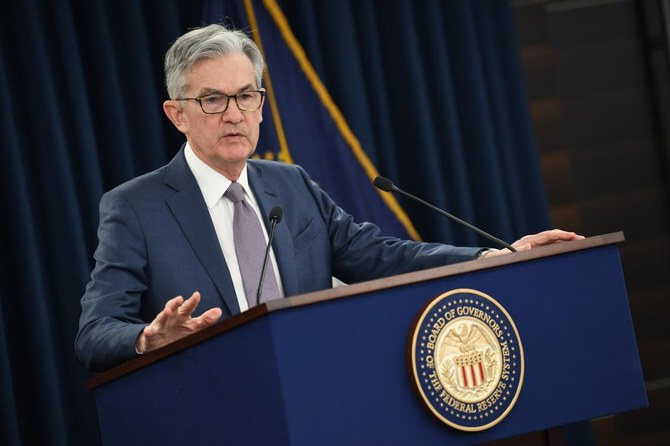
- Fed slashes benchmark interest rate by a full percentage point to nearly zero
- Announces it would purchase more Treasury securities to encourage lending to try to offset the impact of the coronavirus outbreak
How a Saudi start-up hopes to beat sickle cell disease with an AI-trained gene-editing biorobot

- Sickle cell disease is a genetic blood disorder in which red blood cells are crescent shaped and rigid
- Riyadh-based NanoPalm is combining AI-trained models and nanotechnology to remove faulty genes
RIYADH: Saudi-based biotechnology company NanoPalm is developing a biorobot using a unique blend of artificial intelligence, nanotechnology, and gene therapy to find a solution for patients with sickle cell disease.
Affecting approximately 20 million people worldwide, sickle cell disease is a genetic blood disorder in which red blood cells are crescent shaped and rigid. Patients with sickle cell experience blocked blood vessels, pain, fatigue, and anemia, impacting their well-being.
Founded in 2022, and headquartered in Riyadh, NanoPalm began life at the King Abdulaziz City for Science and Technology (KACST) before it was incubated by the NextEra initiative.

The biotechnology company is run by the Ministry of Communication and Information Technology in partnership with The Garage — once a car park, now a 28,000-square-meter space that can accommodate 300 startups.
Ali Al-Hasan and Samar Al-Sudir, the founders of NanoPalm, have used their expertise to develop a product that goes beyond treating the symptoms of sickle cell. Their aim is to remove the gene from a patient’s body altogether.
With Al-Hasan’s knowledge of nanomedicine and Al-Sudir’s background in chemistry, the pair were able to bring their combined expertise to bear.
The NanoPalm team spent more than a year collecting data to feed into artificial intelligence models, Al-Hasan told Arab News.

“We explored AI and we found it was a long journey where we needed to create our own data and generate the data that will be used to train AI models,” he said.
“It will predict the best gene therapy and predict its safety, its effectiveness, and cut down the duration of the therapy, while making it affordable.
“Discovery is at the heart of any drug development process in any pharma company. Now it has become digitized and AI enabled.”
In the development of their product, NanoPalm uses three technologies: AI to model and predict, nanotechnology to create the medicine, and gene therapy to edit genetic material.
“We use the manufacturing recipe from the AI and then go to the lab to build a lipid biorobot,” said Al-Hasan.
Opinion
This section contains relevant reference points, placed in (Opinion field)
“It’s like a vehicle. And those lipid biorobots encapsulate genetic materials such as mRNA and other RNA molecules, which act like scissors to remove the gene that we want to remove.
“When patients come to the clinic, they usually get an IV infusion of biorobots encapsulating genetic materials for four hours and then go home. The biorobots will then navigate their body and find where the disease is. They go after cells responsible for sickle cell.”
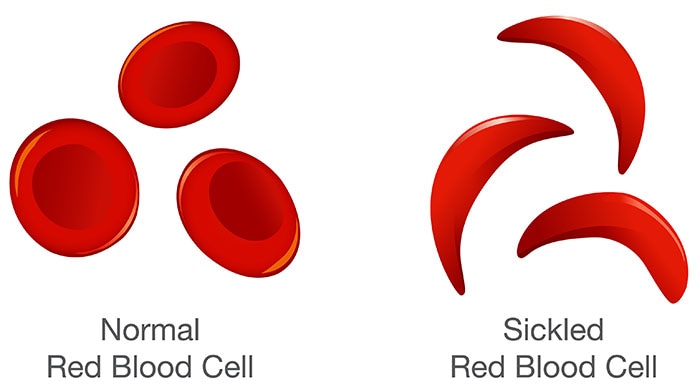
NanoPalm has set out to revolutionize the biotech industry. Al-Hasan said the company’s mission is to make treatment more cost-effective.
“As we dove into this problem, we found two important facts,” he said. “Sickle cell disease is not the only genetic disease. There are 6,000 other genetic diseases that have no known cures.
“The second problem is that the current gene therapies are ineffective. They are super expensive. The patients would have to be rich to afford gene therapies, for example, because sickle cell patients would have to pay $2.2 million to get one injection.”
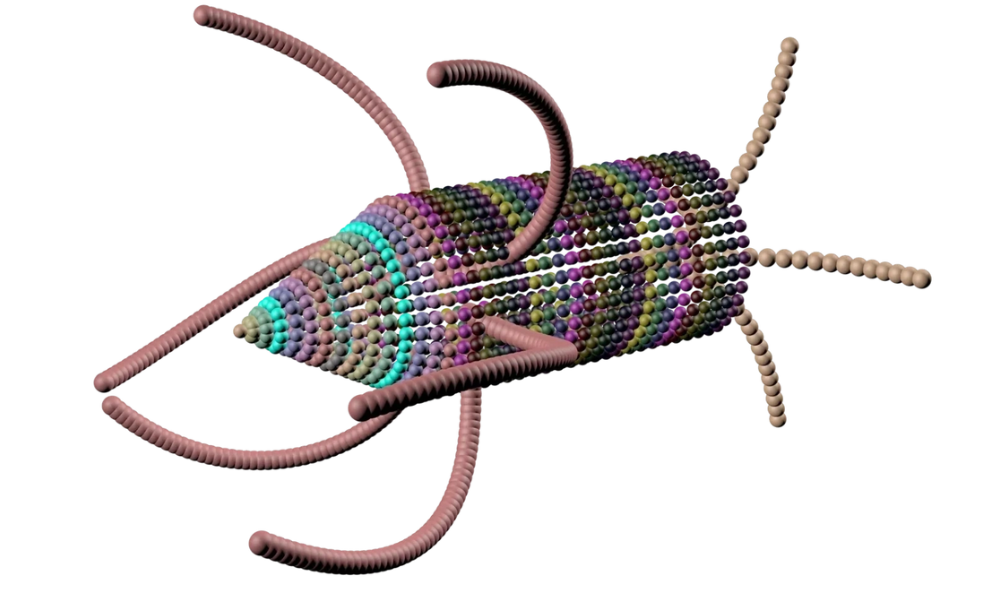
NanoPalm is collaborating with KACST, King Saud University, and the National Guard Hospital to treat 15 sickle cell patients from Saudi Arabia.
Al-Hasan says some 42,000 Saudis stand to benefit from NanoPalm’s product when it is launched in 2030.

China’s exports and imports return to growth

- Shipments from the country grew 1.5 percent last month by value: data
RIYADH: China’s exports and imports returned to growth in April after contracting in the previous month, signaling an encouraging improvement in demand at home and overseas.
The data suggests a flurry of policy support measures over the past several months may be helping to stabilize fragile investor and consumer confidence.
Shipments from China grew 1.5 percent year on year last month by value, customs data showed on Thursday, in line with the increase forecast in a Reuters poll of economists. They fell 7.5 percent in March, which marked the first contraction since November.
Imports for April increased 8.4 percent, beating an expected 4.8 percent rise and reversing a 1.9 percent fall in March.
“Export values returned to growth from contraction last month, but this was mainly due to a lower base for comparison,” said Huang Zichun, China economist at Capital Economics.
“After accounting for changes in export prices and for seasonality, we estimate that export volumes remained broadly unchanged from March,” she added.
In Q1, both imports and exports rose 1.5 percent year on year, buoyed by better-than-expected trade data over the January-February period. But the weak March figures prompted concerns that momentum could be faltering again.
Crude oil imports
China’s crude oil imports rose on the previous year in April, as refiners prepared for a fully recovered Labor Day holiday travel season, official data showed on Thursday.
Crude imports in April totaled 44.72 million tonnes, or about 10.88 million barrels per day, according to data from the General Administration of Customs.
That represented a 5.45 percent increase from the relatively low 10.4 million bpd imported in April 2023.
China saw more than 1.3 billion passenger trips over the five day Labor Day holiday that began on May 1, up 2.1 percent from a year earlier, state media outlet Xinhua reported.
Highway traffic was up 2.1 percent while air trips surged 8.1 percent, Xinhua said.
Domestic airline seat capacity in April was up 1.3 percent on last year, data from consultancy OAG showed.
China’s manufacturing sector continued to see muted recovery in April.
Natural gas imports for April rose 14.7 percent from a year earlier to 10.30 million tonnes, data showed.
Prices of liquefied natural gas for Asia at the end of April were down 11.3 percent on the same period last year, and down 43 percent from last year’s peak in October.
Customs data also showed exports of refined oil products, which include diesel, gasoline, aviation fuel and marine fuel, were up 21.46 percent from a year earlier at 4.55 million tonnes.
Coal imports
China’s coal imports rose in April fueled by lower domestic production and greater buying by power generators to swell stockpiles ahead of the peak summer demand season.
Shipments of coal into the world’s largest consumer of the fuel were 45.25 million tonnes last month, up 11 percent from 40.68 million a year earlier.
That was up by 9.4 percent from March and 2 million tonnes less than December’s record of 47.3 million tonnes.
The boost in imports is partly because domestic coal production has not increased to meet demand, said Feng Dongbin, an analyst with consulting firm Fenwei.
China’s coal output fell 4 percent on the year during the first quarter, the most recent data shows, in part because of a string of deadly accidents that forced mines in the top coal-producing province of Shanxi to halt operations for safety inspections.
Saudi bourse among top 10 in the world in terms of market cap, says official
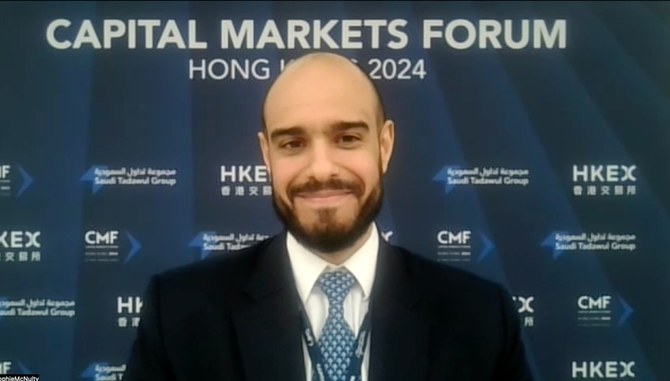
RIYADH: Saudi Tadawul Group finds itself in a “fortunate” position amid the Kingdom’s rapidly growing industries, said a senior executive.
On the sidelines of the Capital Market Forum 2024 held in Hong Kong, Nayef Al-Athel, group chief of sales and marketing officer at Tadawul Group, highlighted the company’s aim to attract global investors by sharing compelling success stories at international forums.
Speaking to Arab News, Al-Athel explained the dual nature of the group’s goals, emphasizing commercial targets focused on maximizing revenues as a listed company.
He said: “I think we are very fortunate as a capital markets group, fortunate in the sense that a lot is going on in the Kingdom. There’s unbelievable momentum in various facets of this country, and we are fortunate to be at the juncture of spillover from all these industries and all these new sectors being unraveled and unveiled in Saudi Arabia.”
Al-Athel added: “The story of the Kingdom of Saudi Arabia is very attractive, and that attraction then translates to us being very attractive as a capital market.”
Additionally, he emphasized Saudi Arabia’s geographic and time zone position, acting as a bridge between the East and West.
“If you take that from a geographical standpoint, time zone perspective, that can be straightforwardly translated into capital markets narratives of connecting East to West,” Al-Athel said.
He added: “If you look at the conference that we’re in here at CMF Hong Kong, it’s literally an attempt, which we think is very successful of us, connecting East to West.”
Commenting on his statement from the previous CMF in February held in Riyadh, Al-Athel explained how Tadawul Group is at the forefront of global capital market leaders.
“We are a top 10 stock exchange when it comes to market cap, to continue to propel ourselves high incomes to market cap rankings. That, of course, means more IPOs and more capital market transactions, more interest from investors all over the world,” he said.
Al-Athel further explained that the group’s success is building itself as an equity capital market powerhouse in Saudi Arabia, particularly through a significant number of IPOs in recent years. There’s a focus on expanding into debt capital markets and derivatives to diversify their offerings.
“We’ve worked hard on building ourselves as an equity capital market powerhouse. The number of IPOs has been staggering over the last three to four years in the Kingdom,” Al-Athel stated.
However, he mentioned that there are currently no specific announcements to make.
“We’re living in a very exciting situation as we speak, hosting 300 investors from 44 companies at the Capital Market Forum in Hong Kong,” said Al-Athel, adding that it’s the first cross-border capital market event, with participation from entities in Saudi such as the CMA and the Ministry of Investment.
He continued: “This is the flavor of where we are at the moment. This is where we are focused. Again, for sure there will be activity in the foreseeable future.”
Furthermore, Al-Athel mentioned that the group has celebrated 400 securities listed on Tadawul.
“Among those 400 listed securities, we find many success stories, and those success stories do sell themselves internationally. We have more than 22 companies traveling with us to Hong Kong, and the sole purpose of those companies, the Saudi corporates, is to tell their success stories to investors from Asia.
Al-Athel concluded his statement by highlighting the significant transformation undergone by the capital market, particularly with the achievement of 400 listed securities and a diverse investor base spanning Saudi Arabia, the region, and globally.
He noted that the rise in institutional investment and increasing numbers of IPOs signal a healthy market environment.
Al Rajhi Bank launches $1bn in perpetual bonds, says document
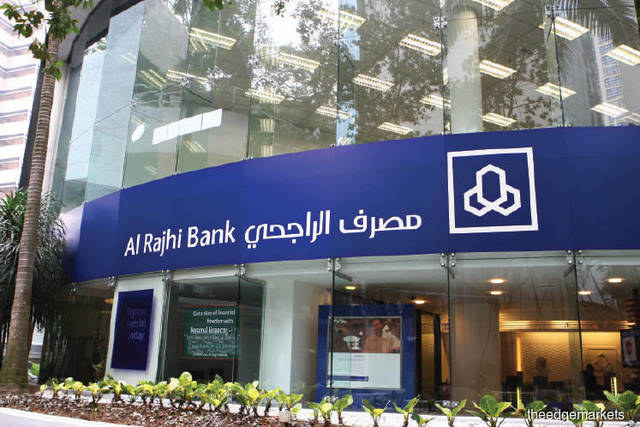
RIYADH: Al Rajhi Bank, the world’s largest Islamic bank by assets and market capitalization, has launched $1 billion in Additional Tier 1 sustainable sukuk, or Islamic bonds, a document from one of the banks arranging the deal revealed on Thursday.
The final yield for the debt transaction was set at 6.375 percent, tighter than the initial guidance of around 6.875 percent released in a document earlier in the day. The notes are perpetual in nature and can first be redeemed in May 2029.
The deal received more than $3.5 billion in orders and allocation is expected to happen later in the day, the document showed.
AT1 bonds, the riskiest debt instruments banks can issue, are designed to be perpetual in nature, but lenders can call them after a specified period.
Closing Bell: Saudi main index slips to close at 12,284
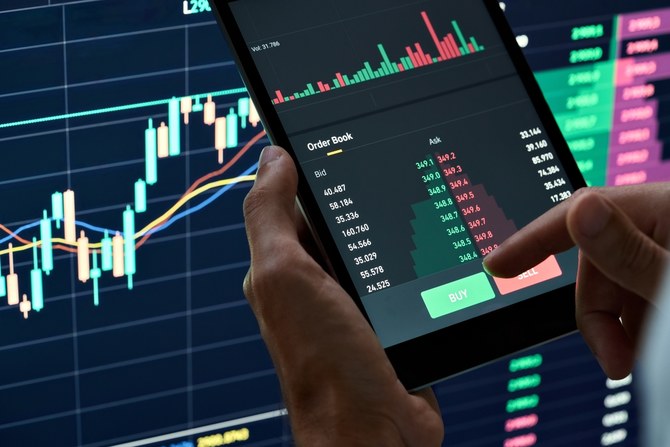
RIYADH: Saudi Arabia’s Tadawul All Share Index slipped on Thursday, losing 175.70 points, or 1.41 percent, to close at 12,284.41.
The total trading turnover of the benchmark index was SR7.31 billion ($1.94 billion) as 41 of the stocks advanced, while 184 retreated.
On the other hand, the Kingdom’s parallel market Nomu rose 199.85 points, or 0.74 percent, to close at 27,086.44. This came as 20 of the stocks advanced, while as many as 45 retreated.
Meanwhile, the MSCI Tadawul Index slipped 19.92 points, or 1.28 percent, to close at 1,537.54.
The best-performing stock of the day was Al-Babtain Power and Telecommunication Co. The company’s share price surged 7.77 percent to SR45.75.
Other top performers include Retal Urban Development Co. as well as Tanmiah Food Co.
The worst performer was Gulf Union Alahlia Cooperative Insurance Co. whose share price dropped by 10 percent to SR22.68.
Other worst performers were Allied Cooperative Insurance Group as well as Al-Etihad Cooperative Insurance Co.
On the announcements front, Jamjoom Pharmaceuticals Factory Co. has announced its interim financial results for the period ending on March 31.
According to a Tadawul statement, the company’s net profit hit SR102.9 million in the first quarter of 2024, reflecting a 22 percent surge when compared to the similar quarter last year.
The increase was mainly driven by an increase in sales, which were slightly offset by the devaluation impact from the Egyptian pound.
Moreover, the National Gas and Industrialization Co. also announced its interim financial results for the first three months of 2024.
A bourse filing revealed that the firm’s net profit reached SR78.6 million by the period ending on March 31, up 7.6 percent in comparison to the corresponding period in 2023.
The increase in net profits is primarily attributed to a surge in gross profit by SR9 million due to increased revenues, alongside a rise in investment and finance income by SR2 million. Additionally, there was an increase in other income by SR1 million, coupled with a decrease in zakat expense by SR2 million.
Furthermore, Modern Mills for Food Products Co. also announced its interim financial results for the first quarter of the year.
According to a Tadawul statement, the company’s net profits climbed 1.3 percent to reach SR64.9 billion in the first three months of 2024 compared to the same period a year earlier.
This rise is mainly owed to revenue growth as well as improving efficiency.
Additionally, Saudi Industrial Investment Group also announced its interim financial results for the period ending on March 31.
A bourse filing revealed that the firm’s net profit stood at SR28 million at the end of the first quarter of 2024, compared to a net loss of SR242 million recorded in the same quarter a year ago.
The increase in net profit is attributed to SIIG’s higher share of profit from joint ventures, coupled with a reduction in zakat expenses.








